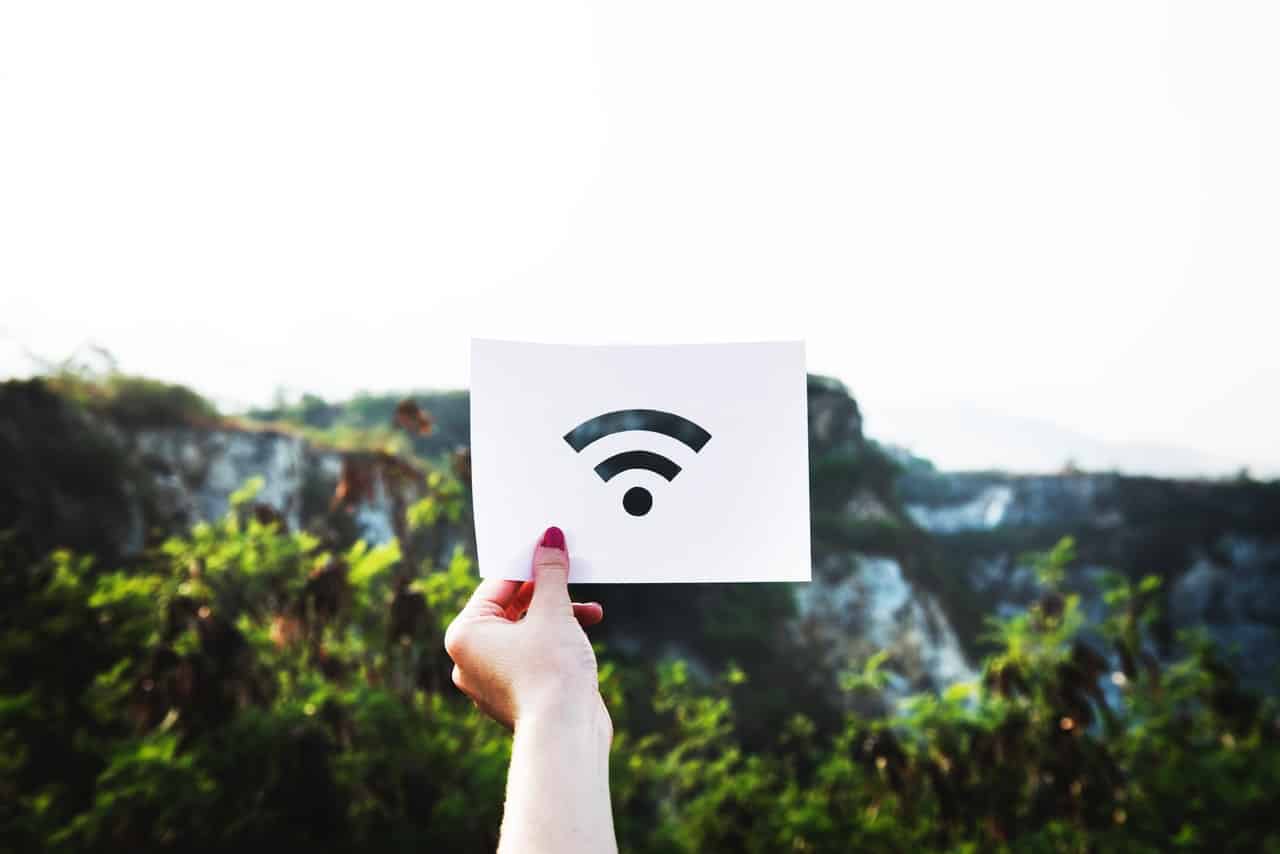How Much Data Does Wi-Fi Calling Use per Minute?

Optimize Your Verification Now!
Secure a second number for registration and verification across platforms.
Optimize Your Verification Now!
Secure a second number for registration and verification across platforms.
Want a discount?
For new users only, download PingMe now to get $0.2 free credit towards receiving your verification code.
- User discretion is advised. Call quality varies from user to user, so we make no guarantees that it will work perfectly for you.
In our last blog post, we talked about making calls over Wi-Fi. This type of VoIP service lets you rely on a Wi-Fi network instead of using a cellular phone network. You can also download an app to make/take phone calls and send/receive text messages. Often, you don’t have to pay for these Wi-Fi calls, but they do suck up data. Just how much data will you use per call?
For each minute you’re on the phone, your Wi-Fi call should eat up very little broadband data, about one megabyte. If you make a five-minute call, you can expect to use five to six megabytes. If it’s a 10-minute call, then about 10 megabytes.
In this article, we’ll dive into all the facets of making and receiving calls and texts on Wi-Fi. That includes an in-depth discussion on mobile data and how you use it. We’ll also talk about how to calculate your data usage with Wi-Fi calling.
What Is Phone Data?
of When you’re at home or at the office, you likely connect your phone to the Internet via a local network. You probably had to input the password to your network just once. Now, whenever you’re in range, your phone connects automatically.
What about when you’re out and about? You’re not on a local network anymore, and so everything you do uses data. Referred to as mobile or cellular data, this data allows you to enjoy Internet connectivity almost anywhere. You can do everything you normally do with your phone, such as watch videos, read and respond to emails, look at websites with images, use social media, play games, and run other apps.
Texting and phone calls often aren’t included as a part of your cellular data plan. Speaking of data plans, most phone owners opt for one of these. A data plan affords a user a certain amount of monthly data. If they go over that data usage, then they have to pay out-of-pocket for the costs.
Certain activities can suck up more data than others. Any kind of video or music streaming will chew through it, as will heavy usage of the device.
Your connection strength varies when you’re off a local network. You could have a 4G connection, short for Fourth Generation. This means connectivity promises of faster Internet than 3G. You might also get on an LTE or Long-Term Evolution connection. This is typically even faster.
How Do You Know How Much Data You Have Each Month?

As we mentioned in the last section, you usually only get a certain amount of data to spare per month. This is usually several gigabytes’ worth. If you’re the one with the phone plan, then you should have selected your data plan as well. That tells you how much data you get for the month.
This data usage begins on the first of the month until the last day, the 30th or the 31st. If you have more than one member of your family on the plan, then they can each get a data usage plan so you’re not all fighting for the same cut of data.
According to NerdWallet, monthly, most people will use a good amount of data, two to five gigabytes. To figure out exactly how much data you go through in that time, you don’t have to call a cellular network provider. The info is contained in your phone.
If you’re on an iPhone, then you want to go to your Settings. Then click Cellular and scroll down to see not only how much data you go through, but which apps suck up the most. You will have to reset this each month or else the info won’t be accurate.
If you have an Android phone, you can also find this information under Settings. This time, tap Data Usage. With an Android, you can set the range in which you want to see when you used data. Which is quite convenient.
What Are the Methods for Wi-Fi Calling?
Now that you know all about mobile data, let’s discuss Wi-Fi calling. You have two methods to choose from when making and receiving calls through Wi-Fi. These are Wi-Fi calling for apps and Wi-Fi calling on a cellular network.
Wi-Fi Calling for Apps
If you reviewed that link we shared at the beginning of the article, it includes 12 apps you can use for Wi-Fi calling. These apps have international support, yes, but they can make and receive local calls, too. From us here at PingMe to Boss Revolution, Google Voice, Skype, and WePhone, you have plenty of options.
To use one of these apps, you first have to download it. Many of the apps we listed support smartphone, tablet, and even computer usage. They work on 3G and 4G connections as well as Wi-Fi, obviously.
Wi-Fi Calling on a Cellular Network
You can also use your phone and thus your cellular network to activate Wi-Fi calling. If you have an iPhone, to do this, you want to go to Settings, then Phone, and then Wi-Fi Calling. You’ll see a tick box next to Wi-Fi Calling on This iPhone. Make sure that tick is green, which means you’ve turned the feature on.
Instead of your standard carrier information, you should notice it says Wi-Fi in its place on your status bar. If you don’t see this, go back into your settings and try again.
How Much Data Does Wi-Fi Calling Use Per Minute?
That brings us to the big question: just how much data do you use when you make or receive a Wi-Fi call?
As we talked about in the intro, it’s not a ton of data. For every minute you talk, your call takes up a single megabyte. If you recall from earlier in this article, most people with smartphones will use two gigabytes of data per month on the lower end. Some go up to five gigs.
One megabyte equals 0.001 gigabytes. It takes 1,000 megs to get to one gigabyte. If you did reach five gigs of data usage with Wi-Fi calling and nothing else, that would mean you’d had to have used 5,000 megabytes. Considering that you suck up a single meg of data for each minute you’re on the phone, to hit the five-gig mark, you’d have to talk for 5,000 minutes per month.
That’s 83.33 days or about 1,992 hours and 119,520 minutes.
A month only has 30 or 31 days, thus making it impossible to use all your data from Wi-Fi calling alone.
That just goes to show how little data Wi-Fi calling really uses in the grand scheme of things. You’re more likely to surpass your data plan limit streaming a cute dog video.
What Kind of Call Quality Can You Expect Using Wi-Fi?
Wi-Fi calling might seem too good to be true. After all, you just download an app and use it (often for free); the calls don’t cost anything, and you get to keep your same phone number. What about the call quality? Is it spotty?
It can be. The longer the distance of the call, the higher the chances you might experience decreases in quality and even some call drops. Also, on crowded Wi-Fi networks, quality will be weak no matter how far away you’re calling. That’s because with so many people using the same network, there’s only so much bandwidth to go around.
If you’re experiencing two-second delays and echoes during your calls, then it’s probably because others have found your awesome Wi-Fi network and now they’re all using it. You might want to consider a network with more bandwidth. Even if the network does get a bit crowded, you shouldn’t risk call drops or delays.
FAQs
Is Wi-Fi calling safe?
The safety and privacy of Wi-Fi calling or lack thereof might make you nervous about using this feature. In most instances, the Wi-Fi networks you connect to are secure. Even if you use an unsecured network, your mobile carrier automatically protects your voice data via encryption. Your private information thus has a lower likelihood of getting into the wrong hands.
That said, if you’re truly concerned about your safety or privacy with Wi-Fi calling, you can always try a virtual private network or VPN service. This will encrypt everything, not just your voice, during your calls and communications on Wi-Fi.
What are the pros and cons of Wi-Fi calling?
We just discussed some of the downsides of using Wi-Fi for calls in the last section. You have sometimes iffy call quality that can get riddled with delays and echoes. Crowded networks increase the likelihood of unstable, poor call quality.
Also, you have to go through some effort to get Wi-Fi calling up and rolling. You’ll either have to download an app or activate the feature on your phone. If you don’t know how to do either, that can limit you from using a really handy feature.
We also covered some of the benefits of Wi-Fi calling, but we’ll go over them again now. This service almost never costs you any money, you use little data, and you can reach people just about anywhere. Even if you’re having service interruptions with your cellular network, you can trust in Wi-Fi calling for your call to go through.

